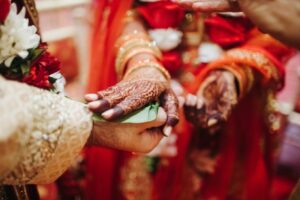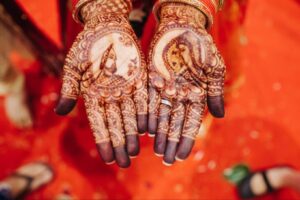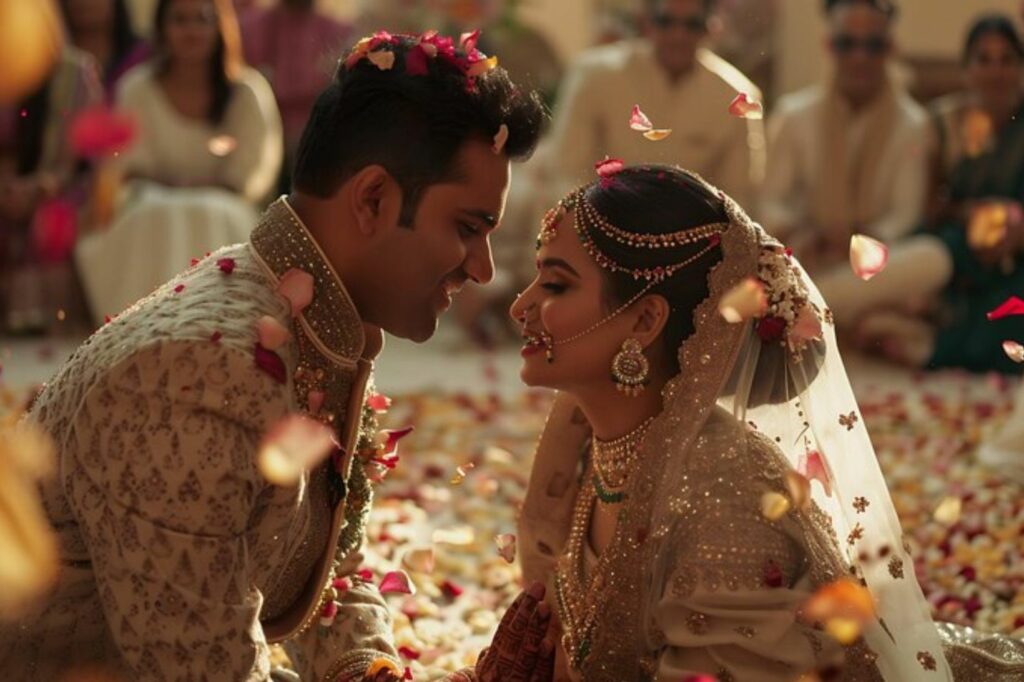Bengali weddings, known for their vibrant colors and rich traditions, offer a captivating glimpse into the cultural tapestry of Bengal. Rooted in age-old customs, these celebrations are a harmonious blend of rituals, music, and feasting that bring families together in joyous union. Each element, from the intricate alpana designs to the resplendent attire, tells a story of love and heritage.
The journey begins with the “Aiburo Bhaat,” a feast for the bride or groom, symbolizing their transition from singlehood. As the celebrations unfold, the air fills with the rhythmic beats of the “Dhak” and the melodic tunes of traditional songs, creating an atmosphere of festivity and warmth. The “Saat Paak” and “Sindoor Daan” rituals, central to the ceremony, embody the sacred vows exchanged by the couple.
Bengali Wedding Culture

Bengali wedding culture holds immense significance, rooted in centuries-old traditions and rich symbolism. Each ritual within the ceremony reflects profound cultural beliefs and values. The “Aiburo Bhaat” feast, for instance, symbolizes the end of singlehood, surrounded by loved ones who shower blessings and gifts upon the bride or groom.
Musical elements feature prominently, with the rhythmic beats of the “Dhak” drum and traditional melodies heightening the festive spirit. These musical expressions not only entertain but also serve to invoke spiritual blessings for the new couple’s journey.
Central ceremonies like “Saat Paak” and “Sindoor Daan” carry deep meanings. “Saat Paak,” the symbolic act of circling around sacred fire seven times, represents the couple’s mutual commitment and eternal bond. Meanwhile, the “Sindoor Daan,” where the groom applies a mark of vermillion on the bride’s forehead, signifies marital status and lifepartner protection.
Bengali weddings exemplify a blend of solemn traditions and joyous celebration, creating a harmonious environment that celebrates love and community.
Traditional Pre-Wedding Rituals
Bengali weddings are filled with vibrant pre-wedding customs that reflect cultural richness and family bonding. These rituals prepare the couple and their families for the joyous journey ahead.
Aiburo Bhaat

Aiburo Bhaat, a traditional Bengali feast, marks the bride or groom’s last meal as a bachelor or bachelorette. Family and friends gather to celebrate, showering them with blessings and gifts. The feast includes an array of Bengali dishes like fish curry and sweets, creating a festive atmosphere before the wedding.
Ashirbad
Ashirbad is a blessing ceremony where the couple’s elders perform well-wishing rituals. Relatives sprinkle husked rice and durva grass on the bride or groom’s head, symbolizing prosperity and longevity. This event fosters unity, bringing families together in benevolent harmony before the marriage celebrations begin.
The Wedding Ceremony
The Bengali wedding ceremony is a captivating blend of cultural traditions, symbolism, and vibrant attire reflecting the essence of Bengali heritage.
Bride’s Attire and Jewelry

The bride wears a traditional Benarasi saree, often red or maroon, symbolizing prosperity and marital bliss. Intricate gold jewelry, including necklaces, bangles, and earrings, adorn her, highlighting her elegance and the family’s status. The “Mukut,” a crown made of shola pith, enhances her regal appearance. The ensemble usually includes “Chandan” paste designs on her forehead, signifying spiritual grace.
Groom’s Attire and Accessories
The groom dons a “Dhoti” and “Kurta,” usually white or cream, signifying purity. He also wears a “Topor,” a traditional conical headgear made of shola pith, symbolizing sanctity in marriage. Gold jewelry like rings and chains are common additions, showcasing traditional Bengali craftsmanship. An “Uttariya,” a draped cloth, is worn over the shoulder, completing the attire.
The Rituals and Customs

Central to the ceremony are rituals like “Saat Paak” and “Sindoor Daan.” In “Saat Paak,” the bride circles the groom seven times, symbolizing their commitment. “Sindoor Daan” involves the groom applying vermilion on the bride’s forehead, marking her marital status. Another notable custom is “Mala Badal,” where exchanging floral garlands signifies acceptance. Each ritual carries deep cultural significance, affirming their bond and the blessings of the families.
Core Traditions
Bengali weddings offer a remarkable tapestry of vibrant traditions and rituals that beautifully encapsulate cultural richness and familial bonds. Each ceremony and custom, from pre-wedding blessings to post-wedding celebrations, highlights the deep-rooted values and joyous spirit inherent in Bengali culture. These weddings are not just a union of two individuals but a celebration of community, heritage, and love. As modern influences blend with traditional practices, Bengali weddings continue to evolve while preserving their core essence, ensuring that this cherished cultural experience remains alive and thriving for generations to come.

